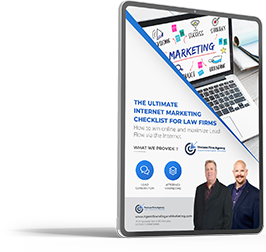The insurance industry, traditionally known for its conservative approach to marketing and client engagement, is undergoing a significant transformation. This shift is largely driven by changing demographics, the rise of digital natives, and evolving consumer expectations. As these dynamics continue to shape the landscape, insurance providers must adapt their marketing strategies to remain competitive and relevant. This article explores how the industry can navigate these changes, with a focus on leveraging digital channels to appeal to a diverse audience.
Understanding the Shift in Demographics
The demographic profile of insurance consumers is changing rapidly. Millennials (born between 1981 and 1996) and Generation Z (born between 1997 and 2012) are becoming a larger part of the market. These groups are digital natives, accustomed to researching, purchasing, and interacting with brands online. A report by the Pew Research Center highlights that over 90% of Millennials and Gen Zers own smartphones and use them as their primary means of online access.
Moreover, the needs and expectations of these demographics are markedly different from those of previous generations. For instance, Millennials and Gen Zers value transparency, personalized experiences, and brands that align with their social and environmental values. This shift necessitates a reevaluation of traditional marketing tactics and a stronger emphasis on digital engagement.
Embracing Digital Marketing Channels
To effectively reach and engage these younger demographics, insurance companies must embrace and prioritize digital marketing channels. Here are several strategies to consider:
- Social Media Marketing: Platforms like Instagram, Twitter, and Facebook are invaluable for reaching younger audiences. Creating engaging content that resonates with the values and interests of these demographics can significantly enhance brand visibility and loyalty. For example, leveraging Instagram stories or Twitter threads to discuss the importance of renters insurance for young adults moving into their first apartment can be an effective way to engage potential customers.
- Content Marketing: Providing valuable and informative content through blogs, videos, and podcasts can help educate younger consumers about insurance products in a format they are comfortable with. For instance, a series of short videos explaining different types of insurance coverage can demystify the purchasing process for first-time buyers.
- Personalization and AI: Using artificial intelligence to analyze consumer data can enable insurers to offer personalized recommendations and experiences. A study by Salesforce found that 52% of consumers are likely to switch brands if a company doesn’t personalize communications to them. By leveraging AI, insurers can tailor their marketing messages and product offerings to meet the unique needs of individual consumers.
- Mobile Optimization: With the high smartphone usage among younger demographics, ensuring that websites, apps, and online content are optimized for mobile devices is critical. A seamless mobile experience can significantly improve engagement and conversion rates.
Adapting to Changing Consumer Expectations
Beyond digital proficiency, understanding and adapting to the evolving expectations of insurance consumers is crucial. This includes offering flexible coverage options, transparent pricing models, and sustainable practices. Engaging with consumers on social issues and demonstrating corporate social responsibility can also enhance brand perception among younger demographics.
Conclusion
The evolution of insurance marketing is not just about adopting new technologies but also about understanding and responding to the changing needs and values of the market. By embracing digital channels and tailoring strategies to meet the expectations of younger demographics, insurance providers can ensure their relevance and success in the digital age. As the industry continues to navigate these changes, flexibility, innovation, and customer-centric approaches will be key to thriving in the evolving landscape.
This article is a collaboration between Carl Willis and OpenAI’s ChatGPT. Created on February 29, 2024, it combines AI-generated draft material with Willis’s expert revision and oversight, ensuring accuracy and relevance while addressing any AI limitations.






